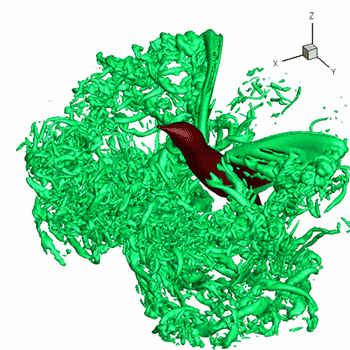#\frac { x } { x + 2} + \frac { 3} { x - 5} = \frac { 7x - 2} { x ^ { 2} - 3x - 10}#
Factor the denominator on the right.
#\frac { x } { x + 2} + \frac { 3} { x - 5} = \frac { 7x - 2}{(x+2)(x-5)}#
Multiply the first term by #color(red)((x-5)/(x-5))# and the second term by #color(blue)((x+2)/(x+2))# so that all terms will have a common denominator.
#color(red)((x-5)/(x-5)) * x/(x+2) + color(blue)((x+2)/(x+2)) * 3/(x-5) = frac { 7x - 2}{(x+2)(x-5)}#
#frac{x^2-5x}{(x-5)(x+2)}+frac{3x+6}{(x-5)(x+2)}=frac{7x-2}{(x-5)(x+2)}#
Now, consider a simple problem like #1/5 +2/5 =x/5#.
It could be solved by simply ignoring the common denominator of #5# and solving using the numerators only: #1 +2 =x#.
We can use the same method here.
#x^2-5x+3x+6=7x-2#
#x^2-2x+6=7x-2#
Subtract 7x and add 2 to both sides.
#x^2-9x+8=0#
Factor.
#(x-8)(x-1)=0#
Set each factor equal to zero and solve.
#x-8=0color(white)(aaa)# and #x-1=0#
#x=8color(white)(aaa)# and #x=1#
When solving rational equations, it is important to check for extraneous solutions by substituting the answers into the original equations. Solutions are extraneous when they do not "check" or result in dividing by zero.
For #x=8#
#frac{8}{8+2}+frac{3}{8-5}=frac{7(8)-2}{(8+2)(8-5)}#
#9/5=9/5# True
For #x=1#
#frac{1}{1+2}+frac{3}{1-5}=frac{7(1)-2}{(1+2)(1-5)}#
#-5/12=-5/12# True
Both answers check.

